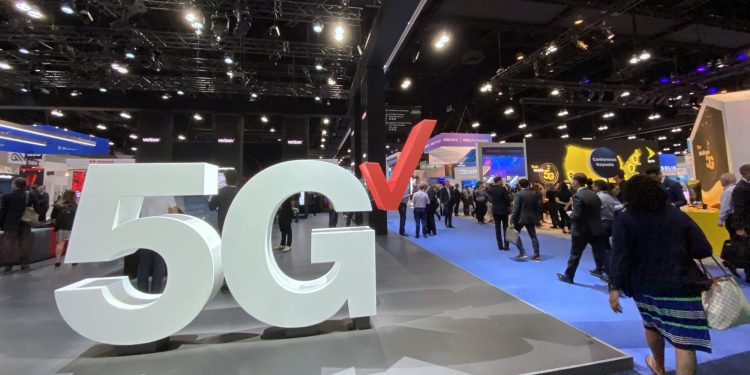Back in February, Verizon said its 2019 plan was to offer mobile 5G in over 30 cities — a non-trivial task for a carrier focused on the short-distance, millimeter wave flavor of 5G service. Today, the carrier announced it has met its goal with a week to spare, though the accomplishment comes with the caveat that its 5G service is only available in small parts of each city.
As of today, Verizon’s mobile 5G network is launching in Cleveland and Columbus, Ohio, as well as the coastal area of Virginia known as Hampton Roads, with each deployment focusing on downtown areas and major landmarks. The carrier notes that it’s now offering 5G at John Glenn Columbus International Airport, the “first U.S. airport with live, commercially available 5G Ultra Wideband service,” as well as Cleveland’s Progressive Field football stadium and multiple shopping centers in Virginia.
Verizon’s 5G rollout has been somewhat quixotic throughout 2019, with the carrier rolling out the fastest version of 5G in relatively few and sometimes unusual locations, a strategy it branded “5G Built Right.” In addition to covering some streets in major cities, Verizon installed 5G in parts of select NFL stadiums, offering high-speed cellular service to users in certain seats and lending devices to demonstrate 5G-powered AR and its 2Gbps peak network speeds. The company says Progressive Field is the 15th NFL stadium with 5G service, though coverage is only available “in part of the lower seating area.”
Other U.S. carriers have relied on lower speeds but further-reaching towers to blanket larger areas of cities with slower 5G coverage. T-Mobile now operates a nationwide low-band 5G network that can deliver 20-300% better performance than 4G, depending on the city, while Sprint and AT&T are offering consumer 5G in fewer cities, using mid-band and low-band, respectively. Verizon’s consumer network unquestionably delivers the fastest 5G speeds, but it may struggle to work indoors and in vehicles, depending on where its small cell hardware is installed.
June 5th: The AI Audit in NYC
Join us next week in NYC to engage with top executive leaders, delving into strategies for auditing AI models to ensure fairness, optimal performance, and ethical compliance across diverse organizations. Secure your attendance for this exclusive invite-only event.
In August, Verizon CEO Hans Vestberg suggested the carrier would offer 5G service across 50% of U.S. land in 2020, a dramatic expansion made possible by dynamic spectrum sharing. This uses existing 4G mid-band towers to deliver both 4G and 5G service as demanded by devices. It’s unclear at this point how fast Verizon’s mid-band 5G service will be, but the carrier subsequently warned that it might “approximate to a good 4G service” in performance. New 5G devices beyond the seven currently offered by the carrier will likely be needed to access its combined mid- and high-band network assets.

